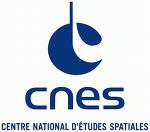The SVOM mission,
a
new generation GRB mission
Future GRB studies must rely on the availability of a continuous flow
of accurate GRB positions (to take advantage of instrumental progress),
but also on the measure of many additional parameters of the GRB (e.g.
redshift, E-peak, jet break time, ...) which are crucial for the
understanding of the GRBs themselves and for their use as astrophysical
tools.
The SVOM mission (Space-based multi-band
astronomical Variable Objects Monitor) will:
- Permit
the detection of all known types of GRBs
- Provide fast, reliable GRB positions
- Measure the broadband spectral shape of the
prompt emission (from visible to MeV)
- Measure the temporal properties of the prompt
emission (from visible to MeV)
- Quickly identify the afterglows of detected
GRBs at X-ray and optical wavelengths, including those which are highly
redshifted (z>6)
- Measure the broadband spectral shape of the
early and late afterglow (from visible to X-rays)
- Measure the temporal evolution of the early
and late afterglow (from visible to X-rays)
The mission concept
The constant advances in the field of GRB studies is made possible by
the increasing synergy between space and ground instruments. The SVOM
mission has been designed to optimize particularly this synergy. The
on-board instruments will permit the detection of the GRBs, their
localization from arcminutes to arcsecondes accuracy, the study of the
prompt emission, the early detection and follow-up of visible
afterglows, and the primary selection of high-redshift candidates
(z>6). The ground segment will permit the fast distribution of
the alerts, the localization of GRBs with sub-arcsecondes precision and
the multi-band photometry of the afterglow and the prompt emissions,
from the visible to the near-infrared domains. more...
|
 The SVOM French Web Site
The SVOM French Web Site







